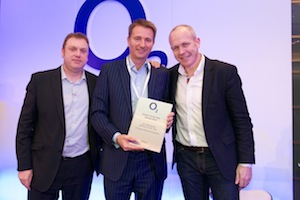Gamma has completed Microsoft's Unified Communication Open Interoperability Program (UCOIP), which now accredits Gamma SIP trunks as being certified for connection to Microsoft Lync 2013.
This follows Gamma's earlier Lync 2010 accreditation which saw Gamma become one of the UK's first SIP providers to gain such certification.
Gamma believes that enterprise voice is now an integral part of the MS Lync proposition.
Gamma's SIP Product Manager, Stephen Ashley-Brian, said:
"We know from the conversations we have with our Partners, just how important this accreditation is. When Microsoft makes such a big play into the enterprise arena as they have done with Lync, then our partners take notice and demand this level of interop to meet that demand."

 Herts-based 2 Circles Communications has retained its O2 JUC Wholesale Partner of the Year award for the third year in succession.
Herts-based 2 Circles Communications has retained its O2 JUC Wholesale Partner of the Year award for the third year in succession.